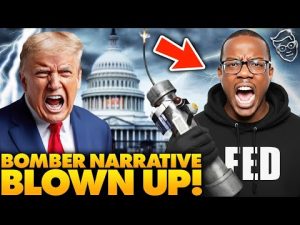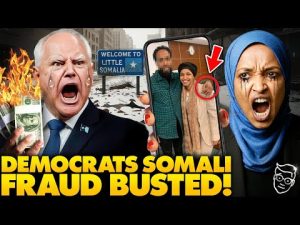**The History Bell: Unlocking the Mystery of JFK’s Assassination and the CIA**
In a world where information is king, few treasures weigh heavier than the mysteries kept behind closed doors. One such treasure is a seemingly ordinary bell that once graced the front door of the White House. This very bell served as a reminder that the White House is not merely the residence of the President but a house belonging to the people. In the past, anyone could walk in and demand an audience—a stark contrast to today’s world where transparency often seems to vanish into thin air. For years, we have clamored for answers surrounding the assassination of President John F. Kennedy—a pivotal moment stamped in history. Recently, a new release of documents brought some information to light but left many still yearning for clarity.
Curiosity is a powerful tool, especially when combined with advancements in technology. The latest trove of documents, generously procured during the Trump administration, sheds light on the tangled web of the CIA’s role during JFK’s time. While some may hope to find a smoking gun in the records, even the most fervent JFK research enthusiasts reflect on the disappointment of the latest data drop. Instead of discovering definitive answers, they were left sifting through hints of the more sinister activities the agency might prefer to keep hidden. With the CIA giving the impression of being untouchable for decades, questions abound: What were they protecting? Why the secrecy?
In the hustle and bustle of politics, every new president pledges transparency, a promise that often meets resistance from the intelligence community. The recent documents indicate that many of these clandestine methods and practices have remained virtually unchanged since the 1960s. The hustle between the White House and the CIA—characterized by an insatiable thirst for control—suggests that more is at stake than just a legacy of a fallen president. Political intrigue often drips like water through a sieve, but this time the focus is on CIA operations that might reveal how deeply they were entrenched in American affairs, peeking into the sanctity of privacy.
The clandestine activities of the CIA during the 1960s are now surface-scratched, suggesting an agency operating beyond the realm of accountability. Documents reveal questionable missions, manipulation of the media, and even unwarranted surveillance—all implying a level of hubris that makes today’s headlines stand in stark contrast. Other unauthorized operations also raise eyebrows, like infiltrations of American businesses and political campaigns, hinting at a deeply ingrained culture of secrecy. If it seems unthinkable for a government agency to spy on citizens, recent evidence suggests that it is hardly a novel occurrence; such actions have roots going back generations.
As the clock ticks forward, the specter of unanswered questions looms larger. The newly released information does not provide a definitive answer to “who killed JFK,” but they spotlight a host of troubling activities that may explain a deeper conflict within the CIA. Artificial intelligence, deployed by curious minds, generated possible scenarios attributing high likelihoods to Lee Harvey Oswald and “rogue CIA elements.” With whispers of an out-of-control agency intertwined with political power plays, the shadows of conspiracy dance dangerously close to the halls of power.
In a world where we grapple with the distance between people and their leaders, the need for questioning, investigation, and accountability has never been more critical. The bell at the White House is more than just a relic of the past; it serves as a rallying cry for citizens to demand transparency and expect answers. As the flow of information gradually seeps out from behind locked doors, it urges the public to speak up, question everything, and remember that the truth, while often uncomfortable, is what keeps the foundation of democracy intact. Whether uncovering ancient mysteries or enduring today’s political drama, the journey to reclaiming trust is one that must continue.







